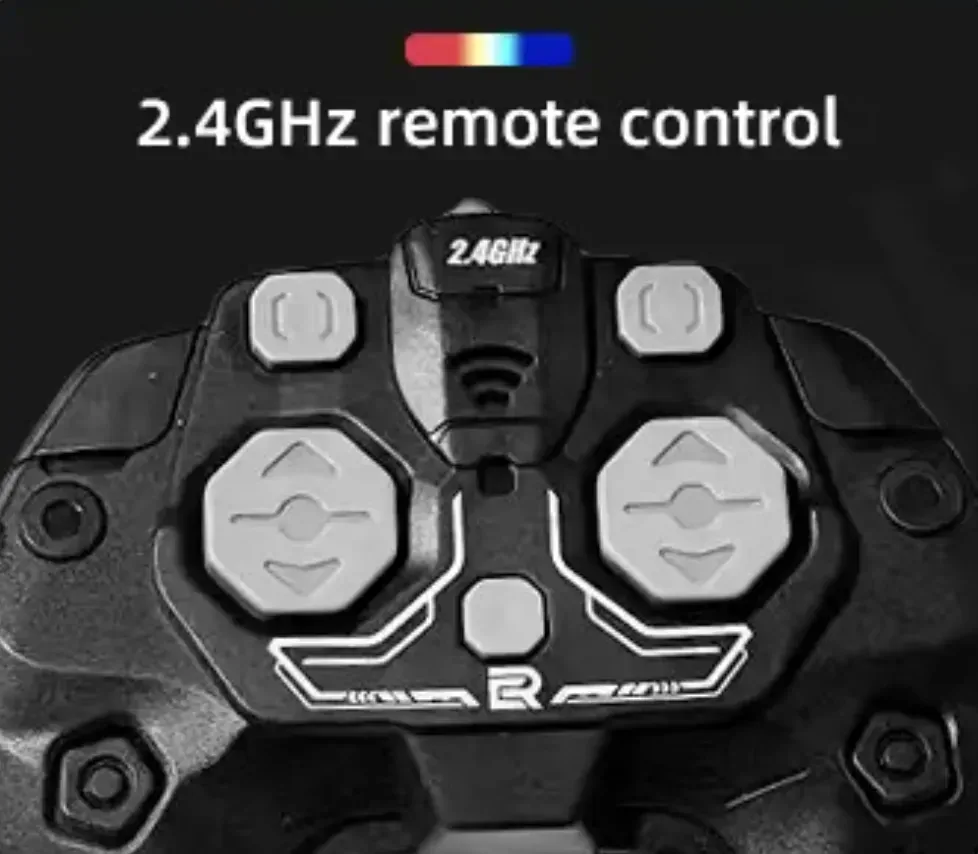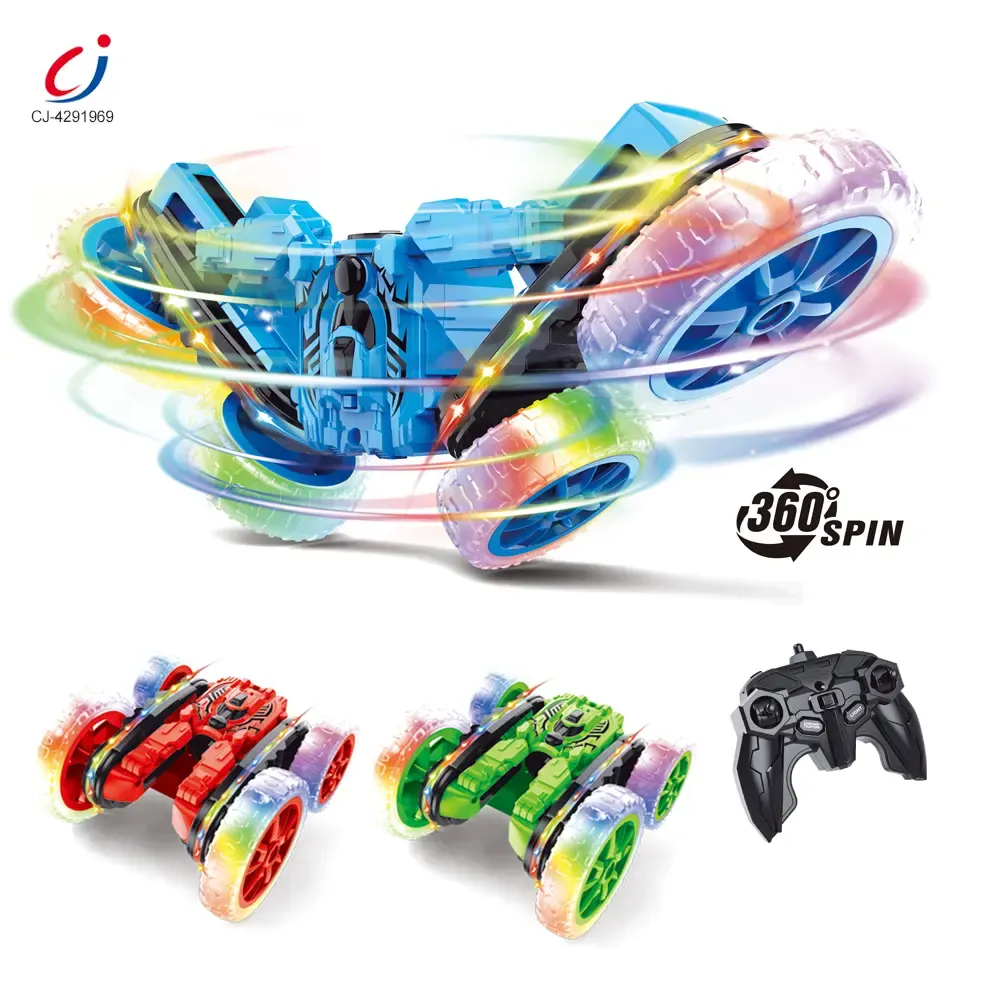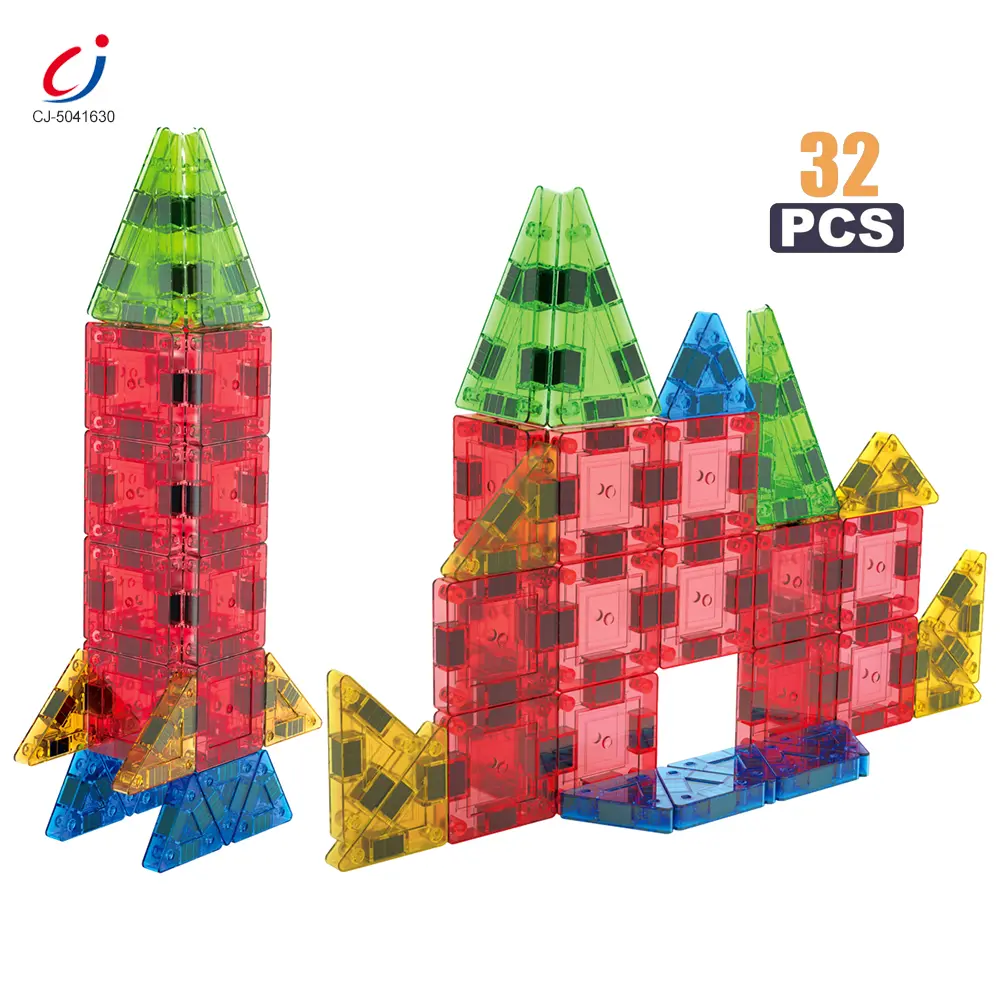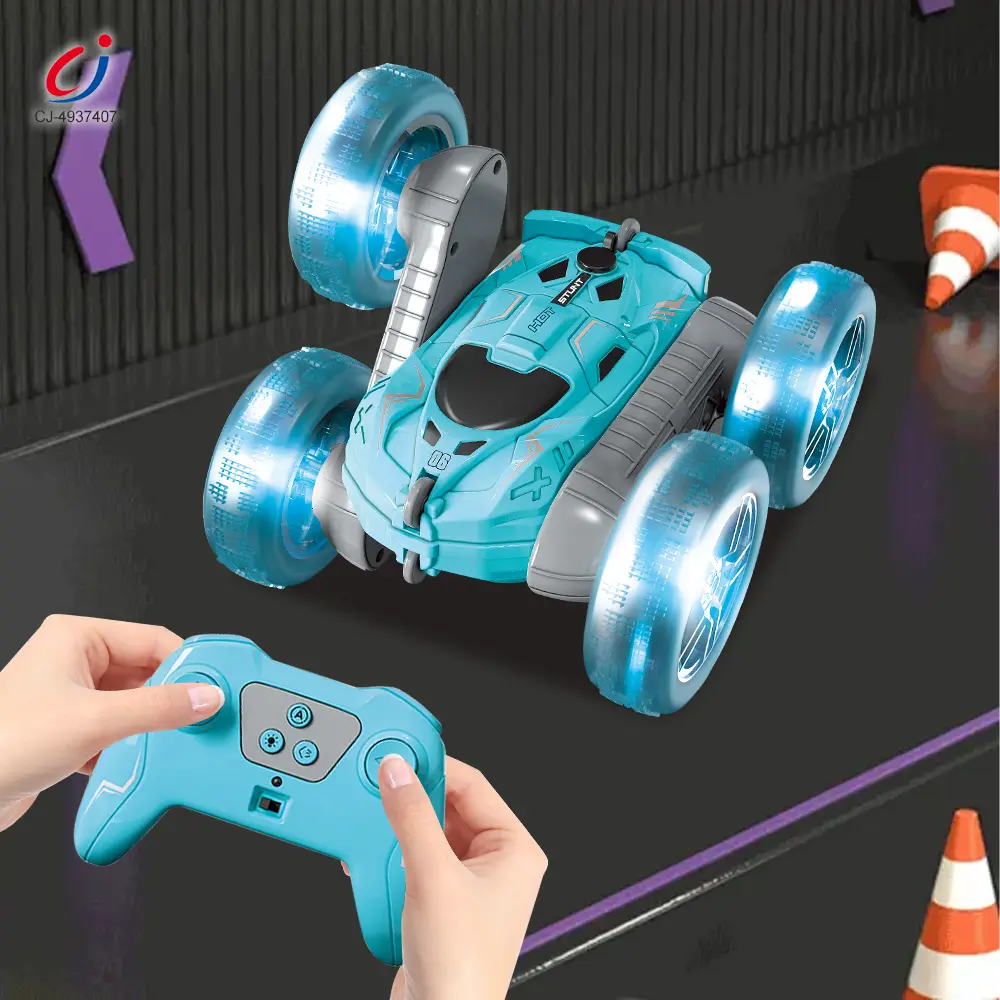Remote-controlled vehicles have fascinated kids and hobbyists for decades. But an RC toy car is far more than a handheld gadget — it’s a compact lesson in physics, electronics, materials science, and systems engineering. That is rather beneficial for kids who like RC toy cars.
In this article, Chengji, a top toy supplier, will walk you through the core technologies that make modern RC toy cars fast, durable, and fun, explain design trade-offs, and highlight what importers and retailers should look for when sourcing high-quality wholesale RC toy products.
How an RC Toy Car Actually Works
The working principle of the RC toy car is to convert user operation commands (such as steering and throttle) into actual mechanical movements.
The entire system is mainly composed of four core modules: transmitter (remote control), receiver (onboard), power system (motor and transmission device), and power supply (battery). When the user operates the control lever of the transmitter, it will send an RF(Radio Frequency) signal. Most modern professional and high-end consumer-grade remote controls typically use the 2.4GHz frequency to achieve reliable and interference-free control. The receiver captures and decodes this signal, and then sends instructions to the electronic speed controller (ESC) and servo: ESC is responsible for precise control of the power and speed of the drive motor, while the servo is responsible for executing steering actions, thereby achieving comprehensive control of the vehicle’s motion.

Physics in Motion: Torque, Traction, and Handling
The main reason that one RC toy car will accelerate like a bullet while another one can navigate around corners like a professional has to do with the application of basic physics.
Torque and Acceleration: The torque that the motor creates is transmitted by gear ratios to the wheels, which directly gives the vehicle acceleration.
- A lower gear ratio (more torque, less top speed) gives you more explosive power out of the gate.
- A higher gear ratio (less torque, more top speed) will help you to gain additional maximum stabilization speed, but will sacrifice the fine acceleration “push back feeling.”
Traction and Tires: Traction depends on the rubber and the amount of contact in the tire.
- Soft rubber gives a good grip but will wear out faster.
- Hard compounding rubber will last longer, but will slip if extreme operations are created beyond its capability.
Handling and Center of Gravity: The weight and position of the center of gravity (CG) establish the risk of the vehicle rolling over and stability at high speeds.
- Lower center of gravity benefits vehicle stability when driving at high speeds and corners.
- A higher ground clearance vehicle is better suited for off-road remote control vehicles.
Power Systems: Brushed vs. Brushless, and Battery Chemistry
The essence of speed and endurance comes from utilizing a motor and a battery together.
Motor Types:
- Brushed Motors: Even with a simple construction and lower cost, these brush motors are still common in entry-level remote-controlled toy cars.
- Brushless Motors: Brushless motors are being widely applied and have superior efficiency, a lower operating temperature, and a longer lifetime. Brushless motors are the go-to motor for mid to high-performance remote control models.
Battery Technology:
- NiMH batteries: They used to be a common choice.
- Lithium Polymer (LiPo) batteries: Currently, LiPo (Lithium Polymer) batteries have come into use as a popular battery choice because LiPo batteries have a higher energy density and are lighter, which will ultimately lead to faster acceleration and longer duration of battery life.
⚠️ Important Safety Reminder:
Users of LiPo battery packs must charge and operate them safely (e.g., with balanced chargers, storage voltage, etc.). For this reason, the professional market suppliers will provide a dedicated, high-quality charger and appropriate guidelines for the safe use of your battery pack.
Electronic Control: ESCs, Servos, and Stabilization
The electronic speed controller is the motor’s “brain,” in that it modulates voltage to the motor, using pulse-width modulation (PWM) so that we can have far better “throttle” control and braking, and sometimes even regenerative braking!
The servos are what actuate the steering; the higher the spec of the servo, the faster it will respond and provide more torque, actuating the steering.
Some advanced RC toy cars come with gyro stabilization systems that help keep the vehicle stable when sliding or on rough ground surfaces, which makes the RC toy car easier to play
Chassis, Suspension, and Materials Science
An RC toy car chassis must balance stiffness, weight, and durability. ABS plastic panels are economical and impact-resistant for kids’ models, while aluminum or carbon fiber components are used for premium hobby-grade cars to reduce flex and improve handling.
Suspension tuning (spring rates, damping) determines how the car reacts to bumps: soft springs increase traction off-road but reduce agility on smooth tracks.
Tires are another critical choice — knobby tires for dirt, slicks for asphalt — and the right compound makes a huge difference in lap times and enjoyment.
Design for Use: Waterproofing, Serviceability, and Spare Parts
Real-world play is messy. Good RC toy design anticipates dust, water, and knocks. Sealed electronics, waterproof servos, and covered connectors extend product life for outdoor play.
Serviceability is also important: hobbyists and parents appreciate modular designs where the motor, ESC, or battery can be swapped easily. Suppliers who provide spare parts and clear exploded diagrams help retailers reduce returns and improve customer satisfaction.
Smart Features and The Move Toward Connected Play
Modern RC toy cars increasingly add smart features: Bluetooth or Wi-Fi for app control, telemetry (speed, battery voltage) sent back to the phone, and even simple AI modes that assist driving. Some models offer programmable steering profiles, drift modes, or route memory — features that bridge play and learning.
For importers, these smart RC toy variants require additional compliance (EMC testing, wireless approvals) and robust firmware SLAs from the manufacturer.
Safety and Regulatory Considerations
Every RC toy car with batteries or a radio module must meet safety and transport rules. Batteries — especially LiPo — have shipping restrictions and require correct labeling and packaging. Radio modules must conform to regional spectrum rules.
Mechanical safety (pinch points, small parts) is checked under toy safety standards like EN71 or ASTM F963. A reliable toy supplier will provide test reports from recognized labs (e.g., Intertek, SGS) and clear user instructions.

Educational Value: RC Cars as STEM Tools
Beyond pure fun, RC toy cars are excellent gateways to STEM learning. Building a kit teaches mechanical assembly; experimenting with gear ratios and tire compounds demonstrates physics; firmware tweaks and sensor integration introduce programming concepts.
Retailers can market certain RC toy SKUs as educational kits for schools or maker spaces, opening institutional sales channels.

What importers and retailers should look for
When sourcing an RC toy car, prioritize:
- Clear compliance documentation (safety tests, wireless approvals).
- Battery safety systems and certified chargers.
- Availability of spare parts and clear BOMs.
- Modular design for easy repair and aftermarket upgrades.
- Firmware update policy and support for app-connected features.
Choosing a manufacturer that understands these engineering and regulatory elements will reduce post-sale issues and build customer loyalty.
Conclusion
An RC toy car is a great marriage of mechanics, electronics, and good design. For children, it’s a toy; for hobbyists, it’s a passion; for educators, it’s a hands-on educational tool. To be good importers and retailers, it is useful to have some understanding of the science behind the product so you can choose models that balance performance, strength, safety, and educational value.
About Chengji

If you are looking for a partner that builds wholesale RC toy products with engineering rigor and supply-chain reliability, Chengji, as a top toy supplier, can assist with wholesale toy options and compliance documentation, and spare-part strategies for your market.
Moreover, our standard SOP factories allow us to provide custom toy solutions for clients all over the world. Your customized product will be produced at the full speed of the SOP production line, ensuring premium quality and on-time delivery without making you lose the sale window.











